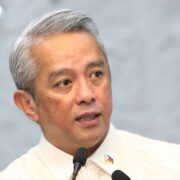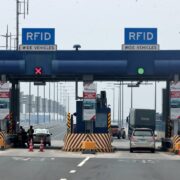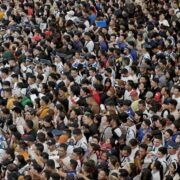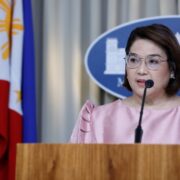PH spending per student 9 times lower than global average
The Philippines spends an average of $11,030 per student, nine times lower than the average expenditure ($102,612) of the other countries that participated in the 2022 Programme for International Student Assessment (Pisa).
The computation is based on the cumulative expenditure per student over 10 years—from age 6 to 15.
For Education Undersecretary Gina Gonong, such finding only demonstrated that a developing country like the Philippines was often “underresourced.”
The Pisa is conducted by the Organization for Economic Cooperation and Development (OECD) to evaluate the academic performance of 15-year-old students in reading, mathematics and science every three years.
It also looked into “contextual variables” influencing their performance like resources invested, learning environment, home background and their actual experiences in school.
According to the study, “higher expenditure on education was associated with higher scores in the Pisa mathematics test” for countries or economies whose cumulative expenditure per student was under $75,000 in 2019.
But it noted that average education spending was related to their performance “only to a certain extent.”
Despite lion’s share
Sen. Sherwin Gatchalian, chair of the Senate committee on basic education, said in a forum on Wednesday that compared to OECD countries, the Philippines was still far behind in terms of average expenditure for students.
Despite receiving the lion’s share of the national budget every year, the Department of Education still has limited funds so its budget must be allocated properly, especially toward its learning recovery efforts.
The 2022 Pisa showed that 15-year-old Filipino students were still among the lowest scorers in the three subjects compared to their counterparts in 80 other countries.
Although the Filipino students’ average scores in mathematics and reading went up by a few points compared to the previous study in 2018, the changes did not show any statistically significant improvement, the report noted.
Because of the country’s dismal performance in the large-scale international assessment for the second time, Gatchalian stressed the importance of intensifying the DepEd’s learning recovery program to cover more students.
P10-B needed
According to him, the DepEd needed about P10 billion to roll out the program in almost 40,000 public schools. However, only P2.9 billion was earmarked for the purpose in its budget for next year, P7 billion short of the target.
Gatchalian said he was looking at tapping other sources within the General Appropriations Act, particularly the Office of the President’s contingency funds.
“I think together, we can convince the Office of the President to plow in more funds in order to intensify our learning recovery,” the senator said.
The Department of Budget and Management has said that contingent funds should be used exclusively for new or urgent projects that need to be implemented during the fiscal year.
When the pandemic hit the country, Gatchalian said the government bought close to P100 billion worth of vaccines because “we treated the pandemic as urgent and something that we need to get ourselves out of.”
“We have to treat [this problem in education] the same way. We have to spend a lot of funds in order to intensify our programs so that we can get ourselves out of this education crisis,” he added.
Earlier this year, DepEd launched its National Learning Recovery Program with different components like the learning camps conducted at the end of the school year, the upcoming “Catch-up Fridays” starting in January 2024 where an entire school day would be dedicated to enhancing the literacy skills of students, and the National Math and Science programs, details of which have yet to be announced.
Teacher-student ratio
Meanwhile, based on the OECD’s analysis of other factors in education performance, the average teacher-student ratio in the Philippines increased from 1:26 in 2018 to 1:30 in 2022. The average ratio for OECD countries is one teacher every 12 students.
“Similar to 2018, the average class size in the Philippines was 43, higher than the OECD average of 26,” Gonong said in the same forum on Wednesday, adding that the student-teacher ratio and class size were higher in public schools than in private schools.
The Pisa study noted that education systems that reported lower student-teacher ratios and smaller class sizes generally showed higher math scores.
In terms of shortage of learning resources, the index of shortage of educational material in the country was relatively high (0.71) compared to the OECD countries on average (-0.17).
“At least half of the students were in schools whose principal reported that [their] capacity to provide instruction was hindered by a lack of educational materials or inadequate or poor educational materials,” the study said.
Actually increasing
In an earlier interview with the Inquirer, education policy expert Karol Mark Yee said that when it came to resources, the country’s budget for education had increased over the past years.
“When you look at the data, it says that our budget spending for education in 2009 was only P7,876 per student. In 2020, it increased to P20,834,” he said.
In terms of education spending as a percentage of the gross domestic product (GDP), Yee said that in 2005, the budget for education was only 2.5 percent of the GDP. In 2019, it went up to 3.4 percent but this was still below the recommended 4 to 6 percent.
Yee, executive director of the Second Congressional Commission on Education, stressed that having a sufficient budget was not the only important factor since the money must still be used for the “most strategic interventions.”
“Although it has already improved, we need to ensure that we are spending on the right things and we are spending it fully,” he said.
Yee cited the case of special education funds under local governments which have been historically underutilized by 30 percent, according to data.
In 2022, he said the underutilized budget amounted to P14.8 billion.
“Imagine, you could have fed many children, and repaired many classrooms if only that P14.8 billion was used and used for the right [purpose],” Yee added. INQ
















